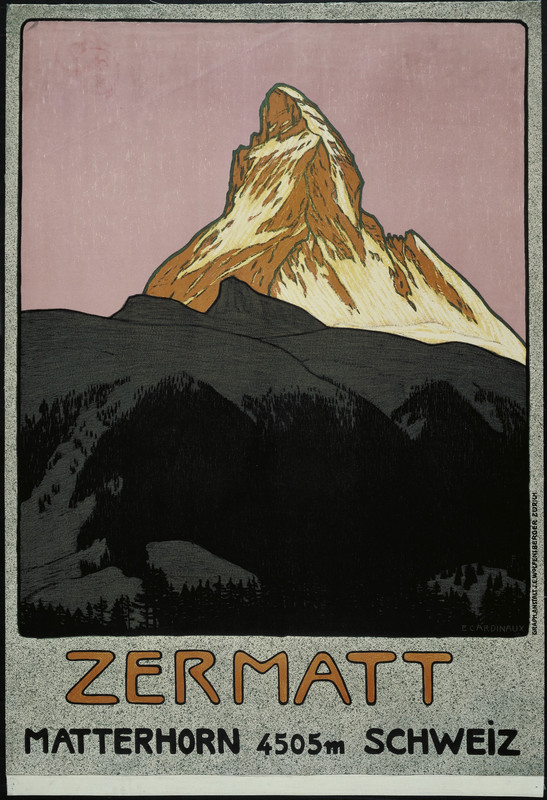About Plakatstil
In pre-war Berlin, Bernhard's approach inspired a revolution in commercial advertising. Emil Cardinaux drew the first modern Swiss poster in 1908, depicting Zermatt, which has many traits of the German Plakatstil. This style was popularized by Niklaus Stoecklin and Otto Baumberger, whose Sachplakat (object posters) were distinguished by a straightforward, concise, and quite often hyperrealistic approach (Meggs, 207).
Due to World War I, which disrupted business, Plakatstil was essentially ended by 1914. Poster artists were obsessed with increasing patriotism during the war, and after the war, new techniques arose, notably Art Deco. Plakatstil had little influence outside of Europe since it was short-lived.
Endnotes:
1. “1900s: Plakatstil.” A Timeline of Design History, January 31, 2019.
2. Stephen Eskilson. Graphic Design: A New History. New Haven, CT: Yale University Press, 2019.
3. Steven Heller. “The Object Poster, the Visual Pun, and 3 Other Ideas That Changed Design.” The Atlantic. Atlantic Media Company, April 12, 2012.
4. Pat Kirkham. “Reassessing the Saul Bass and Alfred Hitchcock Collaboration.” West 86th: A Journal of Decorative Arts, Design History, and Material Culture 18, no. 1 (2011): 50–85.
5. Philip B. Meggs. Meggs’ History of Graphic Design. New York: Wiley, 2016.
